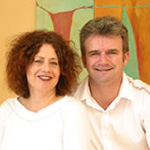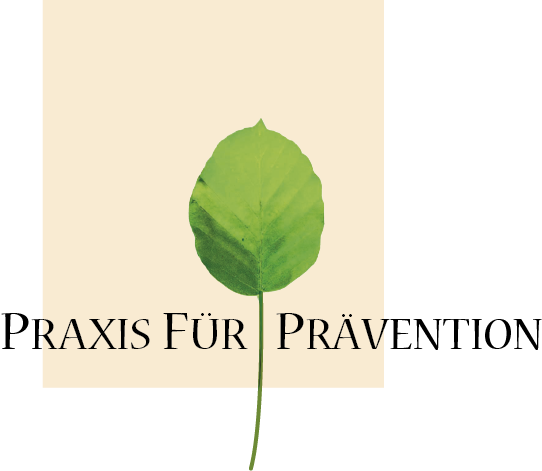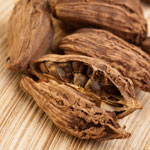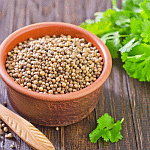Tradition And Ayurveda
Dies ist ein Beitrag aus unserem alten Forum, der nicht mehr kommentiert werden kann.
Unser neues Forum findest Du hier!

Tradition And Ayurveda 29 Okt 2013 07:39
1
tripathi
Tradition and Ayurveda Tradition :-
According to standard dictionaries Tradition means handling down of opinion or practices to posterity un-written : A belief or Practice.
Thus, the Tradition handed over by word of mouth or example from One generation to another generation without written instructions. Tradition is an inherited pattern of thought or action ( as religious doctrine or practice or a social custom)Ayurveda :-
Ayurveda is a science and philosophy of life. It is scientific way of life and it is not only science of medicines as being understood generally. Where science ends philosophy begins. Every science has its own philosophy. These are not opposite meaning terms. All things bestowing happiness of life and avoiding un-happiness, all things beneficial to life, and abstaining from painful things are dealt in Ayurveda. From conception to rebirth all aspects are covered by Ayurveda.
According to Ayurveda and Indian philosophy the chief aim of Human life are four
1- Dharma
2- Artha
3- Kama
4- Moksha“Ayu” means in an union of physical body ( body made from five elements called Panchmahabhut ), ten sensory and motor organs, energy, mind and soul.
Veda means an scientific knowledge, happiness is called health and un-happiness is called disease. The aim of Ayurveda is to protect (maintain) health and cure the disease.In the ancient context Ayurveda can be defined that which covers all aspects of life and therefore a day and night regimen, a seasonal regimen, a regimen for the pregnant lady and post partum regimen in detail have been prescribed in Ayurveda.
Sadachar, sadavritta, ,and swasthvritta rules to be followed always and by all teachers and taught relations are also well discussed. Do’s and donot do’s have been discussed elaborately, the hindu religion book have taken all these in there text from Ayurvedic lectures, so that on the name of religion, common man will follows.
Preventive, curative, and promotive aspects of medicines have formed an Important part of Ayurveda and being practiced in India and neighboring countries.
Ayurveda had been probably traditional upto lord Indra, but the moment it was handled over to Maharishi Bharadwaj in 2000 BC. And broght to earth in conference of maharishies headed by maharishi Atreya. It become science, because, why , where , what and when were applied , this this day it was orally handled over without logic.
There is mentioned in Many conferences in charak samhita ( Agnivesh tantra) and shustra samhita and divergent opinions wehre expressed by many rishis and final conclusion were drawn by Maharishi Atreya or Lord dhanmantri, in thise two samhitas one also find, mention of other rishi opinion ons by words like Ityaka, Apare, Anaye,
Apart from thise two schools. There is third contemporary school of Ayurveda called Kashyap samhita, which has undoubtledly contributed many news things like phakka rohga, jati Harinias ( Gynaecological syndromes) varieties of Sharira sanhanan, Hasta sweda for infants, Lashoon Kalpa, dant sampat, different kala, divisions and prohibited exercise before labour.
Bhela a classmates of Agnivesha and student of Atreya wrote a treatise on Ayurveda and which is available in his original form as it not been redacted, where bhela differs at many places from agnivesha.
Similarly, shustra the first disciple of lord Dhanmantri in 100 BC had made newer contribution to Ayurveda like cadavar dissection, details of surgery, concept of many minor diseases, details of 107 Marmas with classification. Diseases of eyes. Ear, nose, and throat and surgical instruments. Charaka mentions five types of only vatas by name but sushruta gave names to five varieties of pitta vagahatta in 5 A.d. Gave names to five varieties of Kapha also, Amdosh has been discuss elaborately, bagbhatta, charak, sushruta have difference in opinion in also number of bones and srotas at many places.The special abode of doshas in Dhatus are mentioned by vagbhatta and similarly he was first to mentioned that ranjaka pitta is seated in Amasya. He also count Dhamini Marma and added two more Moodha Garbhas. Bagbhatta further adds that there are dosagni and maiagnis also in addition to thirteen Agnis. The Gentic theory of body complexion is being discussed by vagbhatta. the use of RASA medicines begins in vangbatta times and drakshasava also used first of all by him in 5 A.D.
The method of Diagnoses by Radial pulse (nadi) is first of all introduced by Sharangdhara in 12. AD. Sharangdhara a first of all mentioned disease of blood and Snayuka Krimi, Roga, Vagbhatta included many sea products and combination of mercury and sulphur in treatment of diseases.
In the 6 A.D. Nagarjuna Laid foundation of Rasa Shastra and inorganic preparation were used by 11 A.D. in curing many diseases and also Rasayana . sharangdhar of 12 A.D had mentioned a many prepared inorganic compound in preparation of various diseases.
This war revolution in material medicines and therapeutics as many chemotherapeutic drugs were added in it. The sources of pharmaceutics were develops in leaps and bonds from pancha vidha kashaya of charaka to most complete compound inorganic and organic preparation by 12th AD.
Sharangdhara introduced BHANG (cannabis Indica ), ahiphen ( opium ) in the meteria medica, he was the first who mentioned that Vayu goes out in expiration and after taking vishnn padamrit from atmosphere comes through insipiration on the lungs. Purification of ores and many exotic herbs are included in the materica medica on the principal of Ras, virya, Guna, Vipak. On the addition of all this one find the Vividha description of urine formation and food digestion in sarangdhara samhita.
There had been a good exchange between the Unani and Ayurvedic system of medicines and various aphrodisiac preparation were added in Ayurveda. In 12th centuary AD. The concept of Soma Roga, 8 varieties of Vata Rakta and four varities of Aam vata were described by sharangdhara.
In 16th centaury AD. In entrance of Portuguese in India, syphilis (firang ) spreaded and Bhav mishra had described the diseases and its treatment with mercury and arsenic. There is elaborate description of Asava and Arishtha. There was only mentioned of Drakshava in vagbhatta. there are many Ghritas, Taila, Arakas. Etc. were included in Nighantu, Many preparation of contraceptives were added.
In short with above example. We want to advocate that Ayurveda was dynamic, progressive and scientific up to 17th , 18th centaury. It requires treatments of its digestive and metabolic system of modern advancement according to its principles.
There are Practitioners of traditional medicines in India, but they are not Ayurvedist.
Ayurveda firmly believes that the chief aim is to bring body in homeostatic and maintain it in that state or in other words it says prevention of the diseases and cure of the diseases are the chief objects so that once can achieve all things in life. Ayurveda has given very correct and accurate definition of health.
The Doshas, Mala, Dhatus, and metabolism and function of body should be normal soul, body mind, and indriyas ( sensory organ and motor organ) remain happy than only the man called Healthy.
The fundamental principal of Ayurveda is made of Panch Mahabhutas and theory of Tridosh ( vata, pita, kapha) is based on Pancha Mahabhutas, soma surya and agni, regulate the functions of universe similarly tridoshas if vitiated then they cause the diseases and even death. Tridoshas in normal state maintain the ody like seven Dhatus.
Another concept of Ayurveda is about the body constitution. Deha Prakrati and also mental constitution (Manas Prakrati ) which plays very important role in health and diseases.
The principles of Pharmacology of drugs are also based on theory of pahcha Mahabhoota. Every drug is tested according to its Rasa, Guna, Virya, Vipaka and Prabhava ( Action) and therapeutically values are determined and described.
Ayurveda believes that there is not a single thing in the world which cannot be used as medicines. There is more speciality in Ayurveda that it gives elaborate description of Pancha karma. Gradually due to tediousness, time and energy, consumption and development of Ras chikitsa, Panchkarma therapy was discared because of the Hazards, reactions of modern drugs, we feel there ia need of revival of panchkarma Practices specially in North India.
According to Ayurveda man as a whole is treated not an organ or system and doshas and kala should be kept in mind and every individual is to be treated separately and with different prescriptions.
There is high time that we should improve out digestion metabolism and assimilate whatever good found in other systems of medicines after conducting research according to our princes as it did in the past.
There is clear mentioned in the Ayurveda that one who frees from the disease is the best physician and the things. Which give health are the best medicines. There is no end in the science of Ayurveda and hence constant application in its persuits should be done also to acquire skillfulness in practice from others without any sense of humiliation.
All aspects of personal hygiene and social health are very well discussed in Ayurvedic classes.
One of the important aspect of Ayurveda is Yoga, and recently lot of attention is being paid to this all around the world. Ayruveda had paid more importance to mind and psychosomatic Disorders.
System of medicines is not known by drugs. In another word drugs does not belong to a particular system. It belong to all but a particular way of preparation and use according to the principles of the system identify a system of medicines.
Modern Pharmacological method of research on indigenous drugs is not going to promote Ayurveda rather on the contrary claims of Ayurveda will be proved falls. More stress should be given to clinical trails.
The Greatest drawback of Ayurveda system of medicines is the availabilities of genuine preparation of medicines, cost is high and adulteration is much.
Ayurveda further advanced that no body is a perfect physician. Therefore physician should always study not only his system but also other system and hear lectures of other experts.
Ayurveda have been very liberal and open minded. It further emphasis that the treatment curing one ailment and producing another is no treatment and that is what happening with the modern medical commonly used drugs.Need of the day :-Further I would like to say that modern medicines experience a crisis of confidences and image within its own ranks and files, some are voicing serious doubts about modern medicines availability to provide the answer to man’s physical and mental sufferings. Ivam Illich who suggests that weastern medicines have actually wrought harm both by causing iatrogenic diseases. And dangers the growth of natural immunity’s quite correct it has dehumanized the doctor- patient relations. I further add that it has caused tremendous harm at the genetic level. Cost of modern medicines with its paraphernalia cannot be born by the developing countries.
But still one cannot ignore the modern pathological, biochemical, radiological and other method of investigation, development of surgical tools, techniques, anesthesiology method of prevention of shock and immunization etc.
Here there can be only one way to full fill aim and objects WHO., health for all by 2000, every nation should incorporate modern development of science in its own system of medicines according to its need, because modern medicines cannot reach to every man and woman in another hundred years.vaidya (DR) Adwait tripathi
vaidya (DR) adwait tripathi
Tradition And Ayurveda 19 Mai 2014 09:10
2
Nadinka123
Wieso nicht auf Deutsch?
Tradition And Ayurveda 19 Mai 2014 14:08
3
johanna
Hallo, liebe Nadinka123,ja, stimmt. Leider hat der Teilnehmer das nicht auf deutsch geschrieben.
Wir haben uns gedacht, dass es für die, die Englisch können, sehr interessant ist und es aus diesem Grunde nicht gelöscht.Herzlich, das admin-team
Tradition And Ayurveda 26 Jun 2014 07:04
4
monalisa
ooooh, chaade, nicht auf deutsch.Kann das nicht jemand übersetzen, lächel.Namaste
monalisa
Dies ist ein Beitrag aus unserem alten Forum, der nicht mehr kommentiert werden kann.
Unser neues Forum findest Du hier!



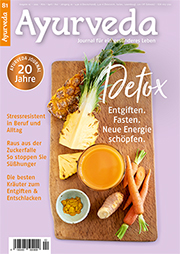


.png)

